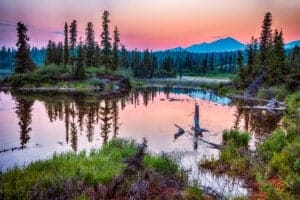Discover the 6 Best National Parks To Visit in Oklahoma
@media (min-width: 481px) {
.mobile-top-content {
display: none;
}
}
#mobileTopContentCTACarouselControls { overflow: hidden; text-overflow: ellipsis; white-space: nowrap; }
.mobile-top-content .more { color: #fff; }
.mobile-top-content a { color: #fff; text-decoration: underline; }
.mobile-top-content a:hover { color: #fff; text-decoration: underline; }
@media (max-width: 480px) {
.mobile-top-content {
background-color: #06a10b;
color: #fff;
text-align: center;
/*height: 60px;
padding-top:5px;*/
font-size:80%;
/* display: block; */
margin: 0px -30px;
}
}
The vast landscape of Oklahoma is home to some of America’s most beautiful national parks. These parks preserve many of the state’s historical sites and provide habitats for a diverse range of natural wildlife. In addition to Oklahoma’s national parks, it contains sections of the Trail of Tears and Sante Fe Trail. Native animals, such as bison, elk, bull snakes, and roadrunners, can be found in many parks across the state. When exploring these parks, you can take a walk through the history of Oklahoma and learn about the events that shaped the state.
The Journal of Park and Recreation Administration explored the parks found in Oklahoma and their importance in American culture.
1. Fort Smith

iStock.com/mcpuckette
| Fort Smith | |
|---|---|
| Size | 19 acres |
| Animal to see | Elk |
| Attraction to see | River Loop Trail |
Over 80 years of early American history have been preserved through Fort Smith National Park. This historic site was home to early pioneers, settlers, fur traders, hunters, and Native Americans. Visitors can get a glimpse of what life was like on the frontier when Fort Smith was first established. Parts of this historic site are found in Oklahoma and Arkansas.
Fort Smith covers 19 acres and is home to elk, bison, and black bears. When in this frontier land, you can explore historical courthouses and jails. You can even see the spot where 86 men were executed between 1873 and 1896.
2. Oklahoma City Memorial

iStock.com/AlizadaStudios
| Oklahoma City Memorial | |
|---|---|
| Size | 3.3 acres |
| Animal to see | Hawk |
| Attraction to see | Oklahoma City Museum of Art |
The Oklahoma City Memorial is one of the most well-known national parks in the entire state. It acts as a place for peaceful quietness and reflection. It covers the area where the Alfred P. Murrah Federal Building was once established and honors survivors, rescuers, and victims of the Oklahoma City Bombing of April 19, 1995. The national park covers just over three acres of land and is free for public access. You might come across squirrels, field mice, and multiple bird species during your visit. If you want to explore more sides of the area, you can stop by the Oklahoma City Museum of Art.
3. Sante Fe National Historic Trail
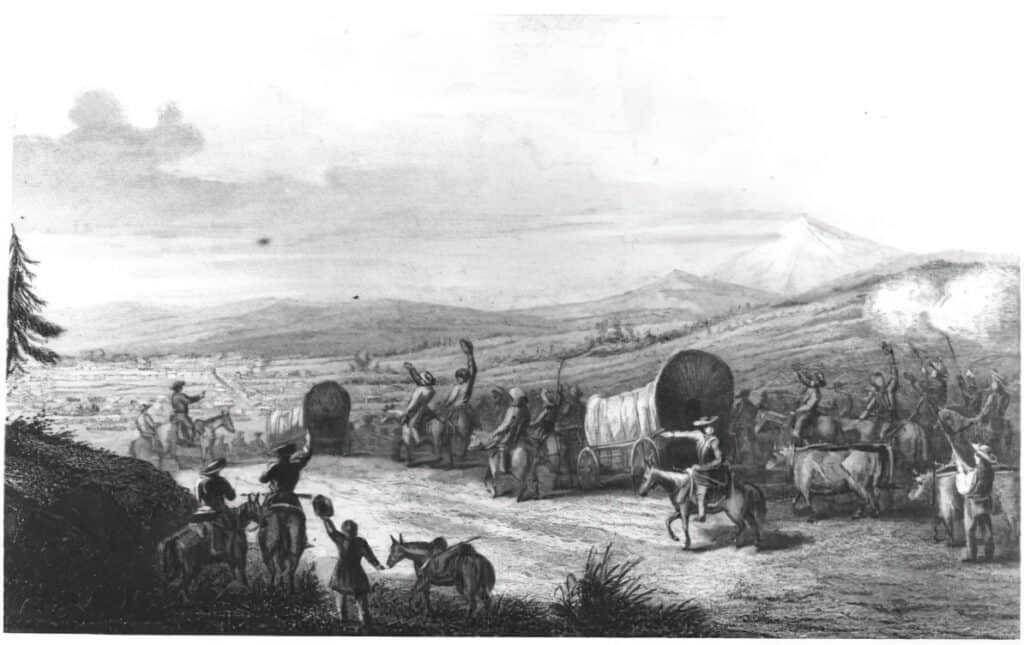
| Sante Fe National Historic Trail | |
|---|---|
| Size | – |
| Animal to see | Roadrunner |
| Attraction to see | National Cowboy and Heritage Museum |
Segments of the Santa Fe National Historic Trail run through Oklahoma and four other states. This trail marks the original route that settlers in the Old West traveled from Missouri to New Mexico. The path was cut wide enough for oxen to pull carts and wagons, and thousands of settlers had adventures down it. Sections of the National Trail can also be found in Kansas, Colorado, Montana, and New Mexico.
Visitors can still explore the miles of wild nature along the Sante Fe Trail. From beginning to end, the trail is 127.5 miles long. Certain parts of the route can be dangerous, and it takes an average of 47 hours to hike completely. You may run into several animals on your adventure, including antelope, roadrunners, coyotes, and bison.
4. Chickasaw National Recreation Area
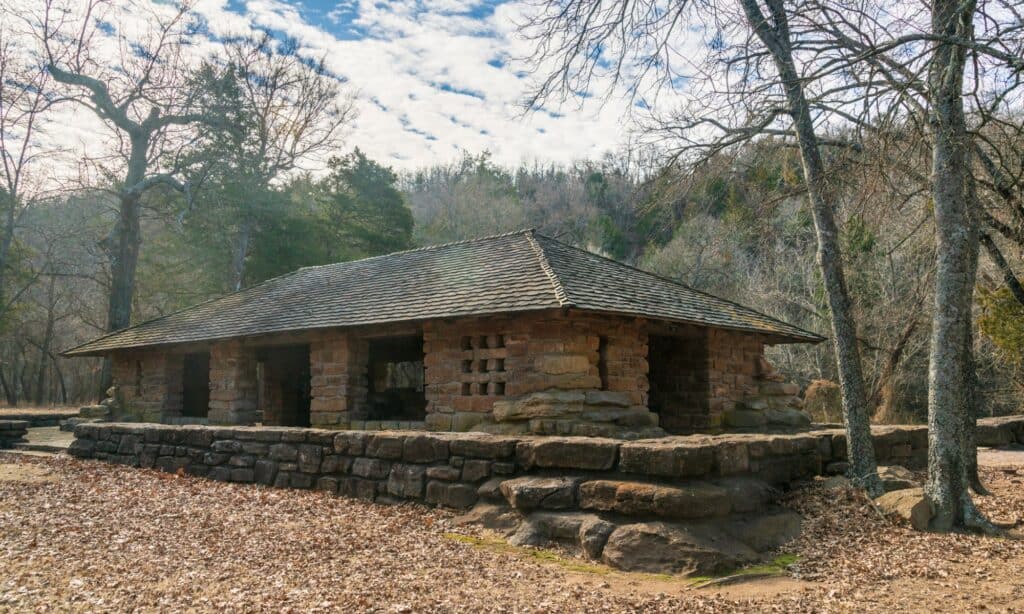
iStock.com/zrfphoto
| Chickasaw National Recreation Area | |
|---|---|
| Size | 9,899 acres |
| Animal to see | Bullsnake |
| Attraction to see | Lake of the Arbuckles |
The Chickasaw National Recreation Area is located in Sulphur, Oklahoma. It has access to multiple forms of water, including lakes, streams, and springs. The area encompasses almost 10,000 acres of land near the Arbuckle Mountains. It also includes the land once known as Platt National Park and the Arbuckle Recreation Area.
If you plan to visit Chickasaw, you can expect to run into a diverse range of animals. The region is home to squirrels, deer, bullsnakes, armadillos, and multiple fish species. Chickasaw is the oldest national park in Oklahoma and has been welcoming guests for more than a hundred years. It’s one of the best options for experiencing the wilderness that Oklahoma offers.
5. Washita Battlefield National Historic Site
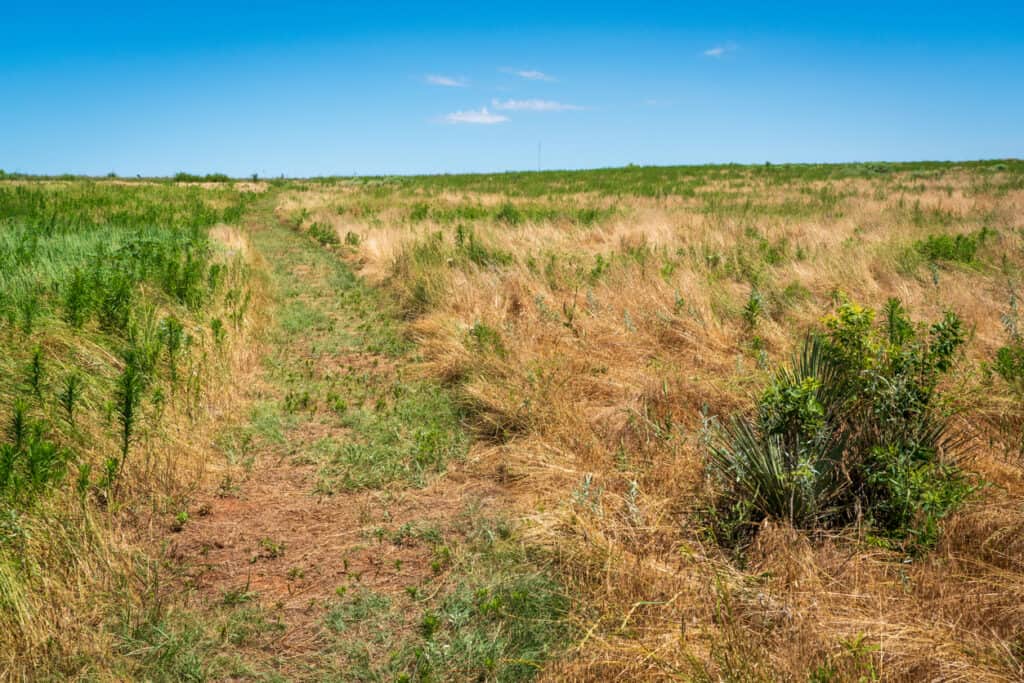
iStock.com/zrfphoto
| Washita Battlefield National Historic Site | |
|---|---|
| Size | 7,680 acres |
| Animale to see | Coyote |
| Attraction to see | Washita Battlefield Museum |
This national park is the site of just one of the many battles fought during the Great Plains Wars. The Battle of Washita took place in 1868 when Lt. Colonel George Armstrong Custer led an attack against a Cheyenne village. Now, the Washita Battlefield honors everyone who lost their lives on that day and during other battles of the Great Plains Wars.
The forests surrounding the battlefield are home to many of the state’s native wildlife species. During your visit, you may run into coyotes, beavers, rats, badgers, or armadillos. The battlefield covers 7,680 acres of Oklahoma land and offers plenty of opportunities to enjoy nature. A museum on-site allows guests to take a walk through history. A short film plays throughout the day and explains the events that happened in Washita.
6. Trail of Tears National Historic Trail
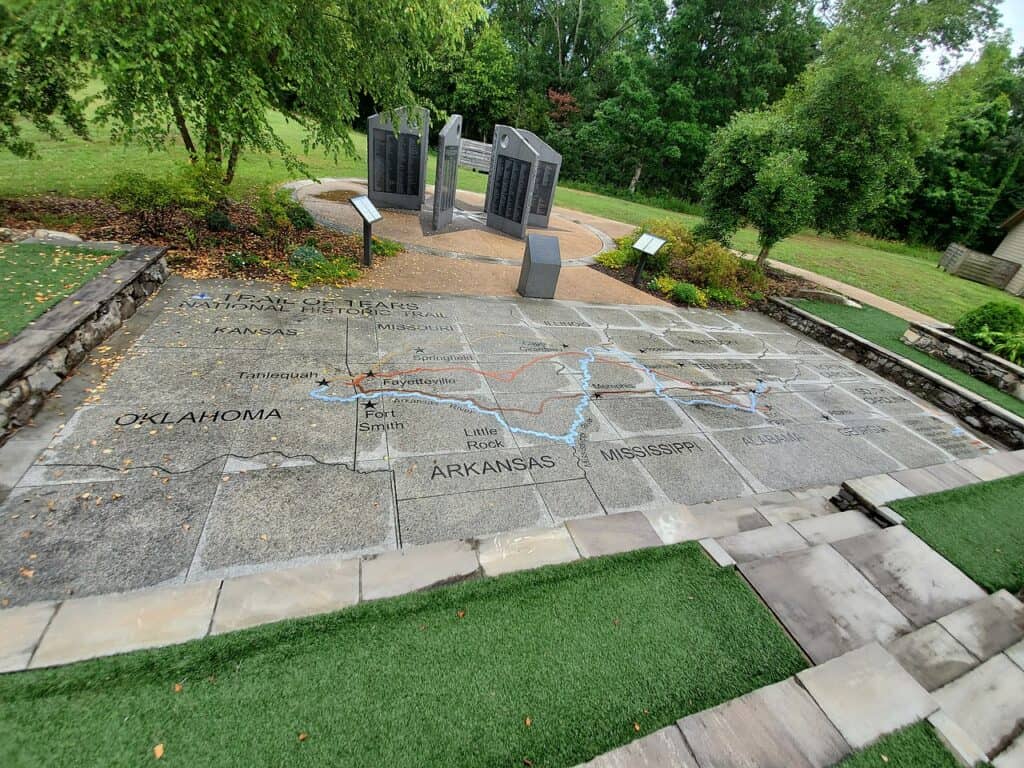
It’sOnlyMakeBelieve / Creative Commons – License
| Trail of Tears National Historic Trail | |
|---|---|
| Size | 2,200 miles long |
| Animal to see | Rattlesnake |
| Attraction to see | Cherokee Heritage Center |
There are thousands of miles to the National Historic Trail of Tears, and sections of it can be found in Oklahoma. The trail marks the route that Cherokee Native Americans were forced to take from Tennessee, Georgia, and Alabama to Oklahoma. They took horses, steamboats, and wagons, and they walked on foot. Sections of this trail can also be found in Kentucky, North Carolina, and Arkansas. It stretches for over two thousand miles through the country.
Tahlequah, Oklahoma, marks the endpoint of this route and acts as the capital of the Cherokee Nation today. The city offers many ways to explore the history of Cherokee Native Americans, such as the Cherokee Heritage Center. The heritage center includes an exhibit that showcases 16,000 beads, one for each person who died on the Trail of Tears.
The nearby Sequoyah National Wildlife Refuge has displays to honor the Trail of Tears and protect many of the state’s native animal species. When visiting the Oklahoma sections of this national trail, you may run into rattlesnakes, cottonmouth snakes, snapping turtles, and slider turtles. The Arkansas River that runs near the Trail of Tears is home to several bass, catfish, and carp. The river offers plenty of opportunities for fishing and other water recreation.
More from A-Z Animals
.more-snake-card-image { max-height:140px !important; }
@media (min-width: 481px) {
.mobile-top-content {
display: none;
}
}
#mobileTopContentCTACarouselControls { overflow: hidden; text-overflow: ellipsis; white-space: nowrap; }
.mobile-top-content .more { color: #fff; }
.mobile-top-content a { color: #fff; text-decoration: underline; }
.mobile-top-content a:hover { color: #fff; text-decoration: underline; }
@media (max-width: 480px) {
.mobile-top-content {
background-color: #06a10b;
color: #fff;
text-align: center;
/*height: 60px;
padding-top:5px;*/
font-size:80%;
/* display: block; */
margin: 0px -30px;
}
}
The vast landscape of Oklahoma is home to some of America’s most beautiful national parks. These parks preserve many of the state’s historical sites and provide habitats for a diverse range of natural wildlife. In addition to Oklahoma’s national parks, it contains sections of the Trail of Tears and Sante Fe Trail. Native animals, such as bison, elk, bull snakes, and roadrunners, can be found in many parks across the state. When exploring these parks, you can take a walk through the history of Oklahoma and learn about the events that shaped the state.
The Journal of Park and Recreation Administration explored the parks found in Oklahoma and their importance in American culture.
1. Fort Smith

iStock.com/mcpuckette
| Fort Smith | |
|---|---|
| Size | 19 acres |
| Animal to see | Elk |
| Attraction to see | River Loop Trail |
Over 80 years of early American history have been preserved through Fort Smith National Park. This historic site was home to early pioneers, settlers, fur traders, hunters, and Native Americans. Visitors can get a glimpse of what life was like on the frontier when Fort Smith was first established. Parts of this historic site are found in Oklahoma and Arkansas.
Fort Smith covers 19 acres and is home to elk, bison, and black bears. When in this frontier land, you can explore historical courthouses and jails. You can even see the spot where 86 men were executed between 1873 and 1896.
2. Oklahoma City Memorial

iStock.com/AlizadaStudios
| Oklahoma City Memorial | |
|---|---|
| Size | 3.3 acres |
| Animal to see | Hawk |
| Attraction to see | Oklahoma City Museum of Art |
The Oklahoma City Memorial is one of the most well-known national parks in the entire state. It acts as a place for peaceful quietness and reflection. It covers the area where the Alfred P. Murrah Federal Building was once established and honors survivors, rescuers, and victims of the Oklahoma City Bombing of April 19, 1995. The national park covers just over three acres of land and is free for public access. You might come across squirrels, field mice, and multiple bird species during your visit. If you want to explore more sides of the area, you can stop by the Oklahoma City Museum of Art.
3. Sante Fe National Historic Trail

| Sante Fe National Historic Trail | |
|---|---|
| Size | – |
| Animal to see | Roadrunner |
| Attraction to see | National Cowboy and Heritage Museum |
Segments of the Santa Fe National Historic Trail run through Oklahoma and four other states. This trail marks the original route that settlers in the Old West traveled from Missouri to New Mexico. The path was cut wide enough for oxen to pull carts and wagons, and thousands of settlers had adventures down it. Sections of the National Trail can also be found in Kansas, Colorado, Montana, and New Mexico.
Visitors can still explore the miles of wild nature along the Sante Fe Trail. From beginning to end, the trail is 127.5 miles long. Certain parts of the route can be dangerous, and it takes an average of 47 hours to hike completely. You may run into several animals on your adventure, including antelope, roadrunners, coyotes, and bison.
4. Chickasaw National Recreation Area

iStock.com/zrfphoto
| Chickasaw National Recreation Area | |
|---|---|
| Size | 9,899 acres |
| Animal to see | Bullsnake |
| Attraction to see | Lake of the Arbuckles |
The Chickasaw National Recreation Area is located in Sulphur, Oklahoma. It has access to multiple forms of water, including lakes, streams, and springs. The area encompasses almost 10,000 acres of land near the Arbuckle Mountains. It also includes the land once known as Platt National Park and the Arbuckle Recreation Area.
If you plan to visit Chickasaw, you can expect to run into a diverse range of animals. The region is home to squirrels, deer, bullsnakes, armadillos, and multiple fish species. Chickasaw is the oldest national park in Oklahoma and has been welcoming guests for more than a hundred years. It’s one of the best options for experiencing the wilderness that Oklahoma offers.
5. Washita Battlefield National Historic Site

iStock.com/zrfphoto
| Washita Battlefield National Historic Site | |
|---|---|
| Size | 7,680 acres |
| Animale to see | Coyote |
| Attraction to see | Washita Battlefield Museum |
This national park is the site of just one of the many battles fought during the Great Plains Wars. The Battle of Washita took place in 1868 when Lt. Colonel George Armstrong Custer led an attack against a Cheyenne village. Now, the Washita Battlefield honors everyone who lost their lives on that day and during other battles of the Great Plains Wars.
The forests surrounding the battlefield are home to many of the state’s native wildlife species. During your visit, you may run into coyotes, beavers, rats, badgers, or armadillos. The battlefield covers 7,680 acres of Oklahoma land and offers plenty of opportunities to enjoy nature. A museum on-site allows guests to take a walk through history. A short film plays throughout the day and explains the events that happened in Washita.
6. Trail of Tears National Historic Trail

It’sOnlyMakeBelieve / Creative Commons – License
| Trail of Tears National Historic Trail | |
|---|---|
| Size | 2,200 miles long |
| Animal to see | Rattlesnake |
| Attraction to see | Cherokee Heritage Center |
There are thousands of miles to the National Historic Trail of Tears, and sections of it can be found in Oklahoma. The trail marks the route that Cherokee Native Americans were forced to take from Tennessee, Georgia, and Alabama to Oklahoma. They took horses, steamboats, and wagons, and they walked on foot. Sections of this trail can also be found in Kentucky, North Carolina, and Arkansas. It stretches for over two thousand miles through the country.
Tahlequah, Oklahoma, marks the endpoint of this route and acts as the capital of the Cherokee Nation today. The city offers many ways to explore the history of Cherokee Native Americans, such as the Cherokee Heritage Center. The heritage center includes an exhibit that showcases 16,000 beads, one for each person who died on the Trail of Tears.
The nearby Sequoyah National Wildlife Refuge has displays to honor the Trail of Tears and protect many of the state’s native animal species. When visiting the Oklahoma sections of this national trail, you may run into rattlesnakes, cottonmouth snakes, snapping turtles, and slider turtles. The Arkansas River that runs near the Trail of Tears is home to several bass, catfish, and carp. The river offers plenty of opportunities for fishing and other water recreation.






